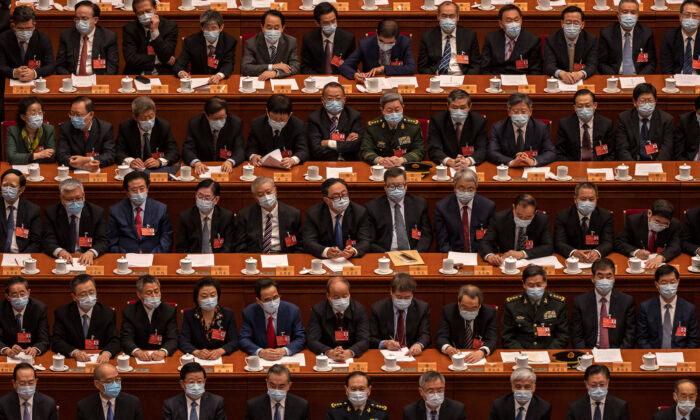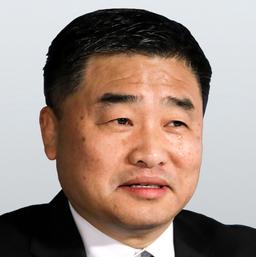In the eyes of foreigners, it appears that China has a bicameral political system similar to the West. Beijing’s authorities always claim that China has its own form of democracy. Unless deeply looking into how politics work in China, it’s hard for Westerners to understand how China’s legislature works.
Usually in March each year, the Chinese regime holds national assemblies for both the Chinese People’s Political Consultative Conference (CPPCC) and the National People’s Congress (NPC) in Beijing. According to official announcements from Beijing, March 5 will be the day when this year’s CPPCC and NPC assemblies begin.
The Function of the CPPCC
The CPPCC isn’t a legislative body, and it isn’t even considered a part of the Chinese government. It’s an advisory group that only provides consultation to the Chinese Communist Party (CCP). It’s the main part of the CCP’s United Front program.The United Front program, directed by the CCP’s United Front Work Department (UFWD), is primarily for building alliances domestically and internationally with all pro-CCP individuals and groups to spread pro-CCP propaganda.
Roughly 40 percent of the members of the CPPCC are CCP members, about 30 percent are from China’s eight “democratic parties,” and the rest is composed of celebrities or wealthy groups in the country.
There have only ever been eight “democratic parties” in China since 1949, when the CCP took control of the country. These eight parties aren’t opposition parties competing with the CCP but minority ruling parties that help the CCP govern China.
The Revolutionary Committee of the Chinese Kuomintang (RCCKMT) is a typical example of how the CCP relies on these eight parties to reach its political goals.
The RCCKMT is currently the largest “democratic party” in China. It was originally founded by the politicians who left the Chinese Nationalist Party, or Kuomintang (KMT).
Established in 1894 under the leadership of Sun Yat-sen, the KMT was once the ruling party of China. After losing China to the CCP, the KMT left China in 1949 and later became one of the two major political parties in Taiwan.
The Chinese regime has claimed that Taiwan is a part of China and has made constant efforts to infiltrate different aspects of Taiwan’s society for the purpose of “reunification” with the mainland. The RCCKMT has been used by the CCP as a major device for making connections to Taiwan’s KMT party.
The Taiwan Democratic Self-Government League (TDSGL) is another “democratic party” in China.
The TDSGL was founded in 1947 in China and originally consisted of Taiwanese Communist Party members who left Taiwan for China. The TDSGL is another channel for the CCP to influence Taiwan’s society for the purpose of reunification.
Members of all eight “democratic parties” are elites in today’s China. The charter statements of all these minority parties include language that reinforces the totalitarian rule of the CCP in China. Historically, many heads of these parties were also CCP members who held dual party membership.
The Function of the NPC
The NPC is the CCP’s rubber-stamp legislature. Historically, the NPC has never rejected any legislation proposed by the CCP. Under the NPC, there are different local levels of the People’s Congress (PC) in provinces, cities, counties, and towns. Higher-level representatives are elected by the lower-level PC assemblies. No representatives are elected through public elections.Besides serving as the heads of different level PC assemblies, the majority of PC representatives are part-time positions without pay and without office budgets. However, when taking time off from their regular work to participate in PC activities, these representatives have the privilege of getting paid by their regular full-time employers.
Each PC or NPC term is five years, the same length as the CCP committee. The NPC is responsible for electing the national chairman of China.
The heads of different level governmental bodies are recommended by the same level local or national CCP committees. For example, the current chairman, Xi Jinping, began his third five-year term as CCP secretary-general in November 2022. Then, the CCP National Central Committee recommended him as the sole candidate for the next national chairman position, and the NPC then elected him as China’s national chairman in March 2022.
In the current system, it’s always one person who occupies all three top positions in China: the CCP secretary-general, China’s national chairman, and chairman of the Chinese Central Military Commission.
Chairman and president are two different words in the Chinese language. Chairman is the title that Xi calls himself in Chinese and also how Chinese people refer to him. Western media and politicians have called him “President Xi” for many years. However, the word “president” in the English language connotes an elected leader of a nation, not one designated by a politburo.
The candidates for the representatives of the lowest level PC assembly are decided through a recommendation process. The local CCP committees assign quotas to different organizations to make recommendations every five years.
Chinese law on the surface allows Chinese citizens to easily become candidates for the lowest level PC. Anyone who can get 10 private citizens’ endorsements will become a legitimate candidate. However, those candidates not recommended by the CCP usually won’t get very far.





